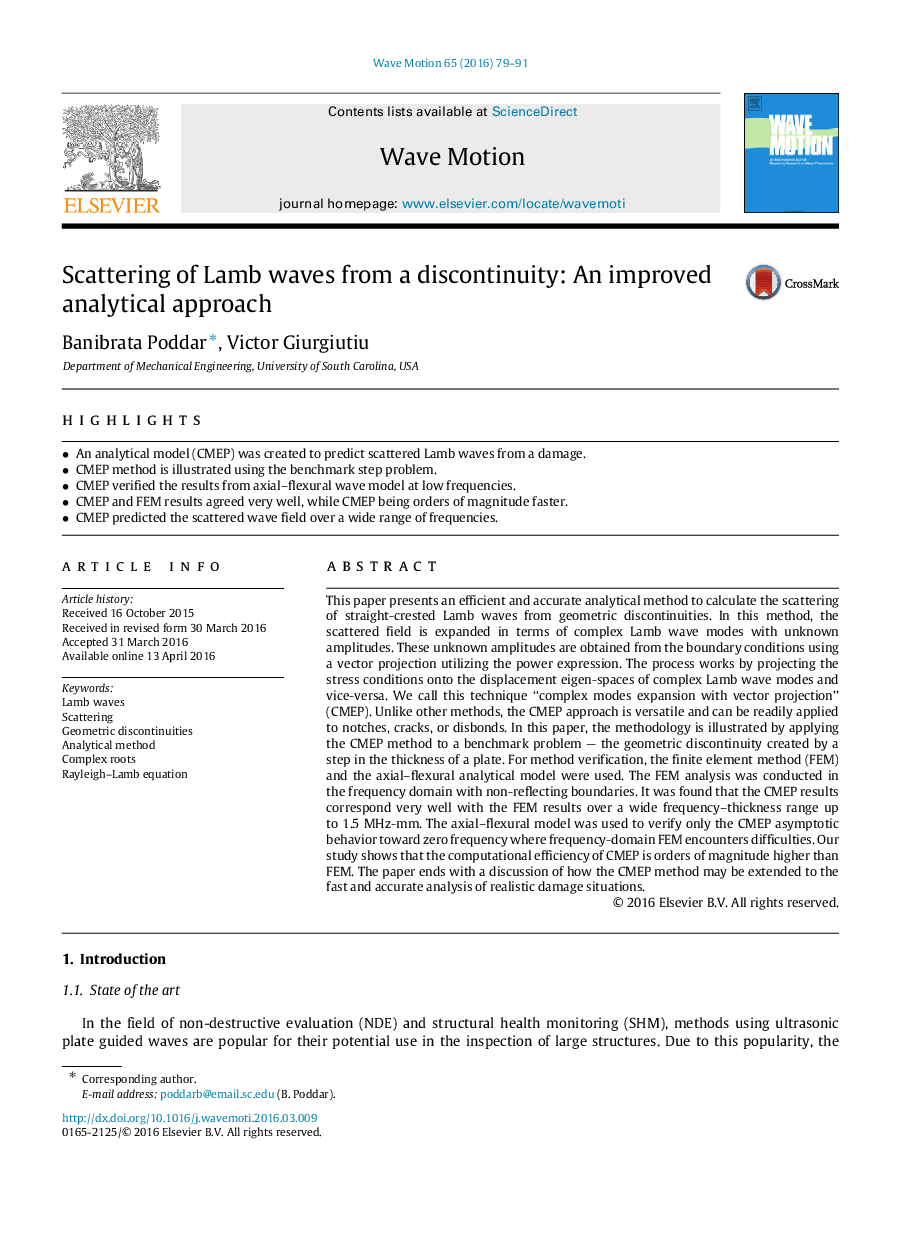| کد مقاله | کد نشریه | سال انتشار | مقاله انگلیسی | نسخه تمام متن |
|---|---|---|---|---|
| 1900022 | 1534266 | 2016 | 13 صفحه PDF | دانلود رایگان |
• An analytical model (CMEP) was created to predict scattered Lamb waves from a damage.
• CMEP method is illustrated using the benchmark step problem.
• CMEP verified the results from axial–flexural wave model at low frequencies.
• CMEP and FEM results agreed very well, while CMEP being orders of magnitude faster.
• CMEP predicted the scattered wave field over a wide range of frequencies.
This paper presents an efficient and accurate analytical method to calculate the scattering of straight-crested Lamb waves from geometric discontinuities. In this method, the scattered field is expanded in terms of complex Lamb wave modes with unknown amplitudes. These unknown amplitudes are obtained from the boundary conditions using a vector projection utilizing the power expression. The process works by projecting the stress conditions onto the displacement eigen-spaces of complex Lamb wave modes and vice-versa. We call this technique “complex modes expansion with vector projection” (CMEP). Unlike other methods, the CMEP approach is versatile and can be readily applied to notches, cracks, or disbonds. In this paper, the methodology is illustrated by applying the CMEP method to a benchmark problem — the geometric discontinuity created by a step in the thickness of a plate. For method verification, the finite element method (FEM) and the axial–flexural analytical model were used. The FEM analysis was conducted in the frequency domain with non-reflecting boundaries. It was found that the CMEP results correspond very well with the FEM results over a wide frequency–thickness range up to 1.5 MHz-mm. The axial–flexural model was used to verify only the CMEP asymptotic behavior toward zero frequency where frequency-domain FEM encounters difficulties. Our study shows that the computational efficiency of CMEP is orders of magnitude higher than FEM. The paper ends with a discussion of how the CMEP method may be extended to the fast and accurate analysis of realistic damage situations.
Journal: Wave Motion - Volume 65, September 2016, Pages 79–91
